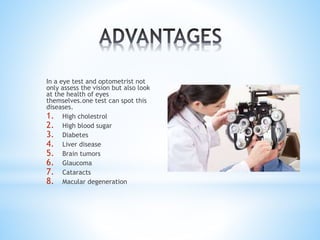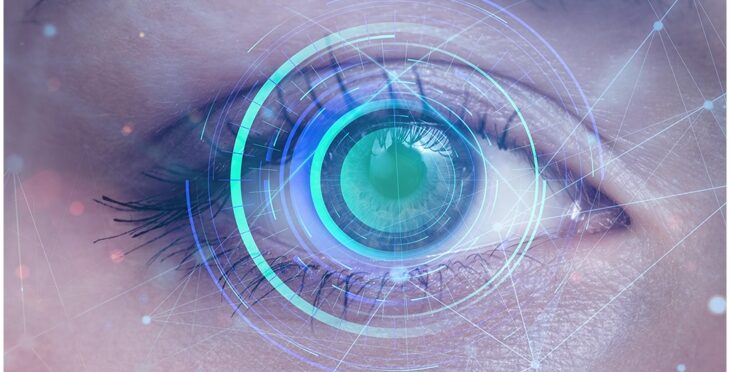Eyecare Near Me - Hassle-free and Expert Eye Services
Eyecare Near Me - Hassle-free and Expert Eye Services
Blog Article
Exploring the Cutting-Edge Technologies Used for Vision Modification
In the ever-evolving landscape of vision correction technologies, a world where innovation and precision merge, a myriad of sophisticated advancements have actually reshaped the opportunities for enhancing aesthetic skill. From the intricate world of advanced laser treatments to the realm of expert system applications and gene treatment developments, the area remains to press borders and redefine what was when believed to be unattainable. With each development comes the potential to transform how we perceive and attend to vision-related difficulties, supplying a tantalizing glance into a future where clearness and precision preponderate.
Advanced Laser Procedures

An additional advanced laser treatment gaining appeal is PRK (Photorefractive Keratectomy) This method includes eliminating the external layer of the cornea prior to reshaping it with a laser. While the recuperation time for PRK is longer compared to LASIK, it can be a far better alternative for individuals with thin corneas or various other corneal irregularities. Both LASIK and PRK have high success rates in boosting vision and are considered risk-free and dependable methods for vision improvement.

Implantable Devices Advancement
Advancements in implantable devices are reshaping the landscape of vision adjustment, supplying new opportunities for individuals seeking permanent solutions to refractive mistakes. These sophisticated devices, such as phakic intraocular lenses (IOLs) and implantable collamer lenses (ICLs), are created to deal with a vast array of refractive mistakes, consisting of myopia, hyperopia, and astigmatism. Unlike traditional glasses or call lenses, implantable devices offer an even more permanent remedy by being placed inside the eye to deal with vision.
Wavefront Innovation Enhancements
The evolution of wavefront technology in vision improvement has changed the accuracy and personalization of refractive treatments. By utilizing sophisticated wavefront sensing units, this technology permits a detailed analysis of the eye's distinct aberrations, allowing eye doctors to tailor treatments with extraordinary precision. Wavefront-guided LASIK, as an example, exceeds typical techniques by attending to not only common refractive errors like nearsightedness, farsightedness, and astigmatism however also higher-order aberrations that can impact aesthetic high quality.
Furthermore, continual improvements in wavefront modern technology have actually led to improved diagnostic abilities, allowing for extra specific pre-operative examinations and post-operative evaluations to keep track of the efficiency of the procedure. In general, these enhancements in wavefront modern technology have substantially contributed to the refinement and effectiveness of site vision improvement procedures, offering clients a greater degree of aesthetic acuity and quality post-treatment.
Artificial Knowledge Applications
With the progression of wavefront modern technology in vision adjustment leading the way for tailored treatments, the integration of man-made knowledge applications is currently poised to more augment precision and efficiency in refractive treatments. Expert system (AI) brings a new level of sophistication to the field by examining vast quantities of information to improve decision-making processes throughout vision improvement surgical treatments. AI formulas can aid eye doctors in pre-operative planning by forecasting the optimum treatment specifications based on individual client information, such as corneal thickness, refractive error, and various other relevant factors. During the surgical procedure, AI can dynamically readjust therapy specifications in real-time, making best use of the accuracy of the adjustment. Additionally, post-operative tracking and adjustment can also gain from AI applications, making sure far better outcomes and reduced threats of complications. By leveraging AI in vision modification treatments, ophthalmologists can supply individuals customized treatments that are not just a lot more specific yet also customized to their distinct aesthetic requirements, eventually bring about improved patient fulfillment and aesthetic end results.
Gene Treatment Breakthroughs
Current developments in genetics treatment have ushered in a new age of accuracy medication, reinventing the landscape of clinical treatments. In the world of vision modification, genetics treatment developments offer appealing remedies for numerous genetic eye problems. By targeting certain genetics accountable for conditions like retinitis pigmentosa, Leber hereditary amaurosis, and various other hereditary retinal diseases, genetics therapy intends to deal with the root triggers of these conditions at a molecular level.
One remarkable advancement in gene treatment for vision improvement is Luxturna, accepted by the FDA in 2017. Luxturna is an introducing gene therapy treatment for people with acquired retinal diseases created by anomalies in the RPE65 genetics. Via the distribution of a useful copy of the RPE65 genetics into retinal cells, Luxturna has actually revealed significant renovations in vision for clients with these genetic conditions.
As study in gene treatment continues to advance, the capacity for customized treatments for a variety of genetic eye problems expands tremendously, providing expect improved vision end results and lifestyle for damaged individuals.
Verdict
In final thought, the visual field modification is continuously developing with using cutting-edge technologies such as advanced laser treatments, implantable gadgets, wavefront technology, synthetic intelligence, and gene therapy. retina service near me. These developments have revolutionized the method vision concerns are attended to, offering more accurate and effective remedies for clients. As modern technology continues to development, his response we can anticipate much more useful site developments in the future that will certainly even more boost the top quality of vision improvement treatments
Report this page